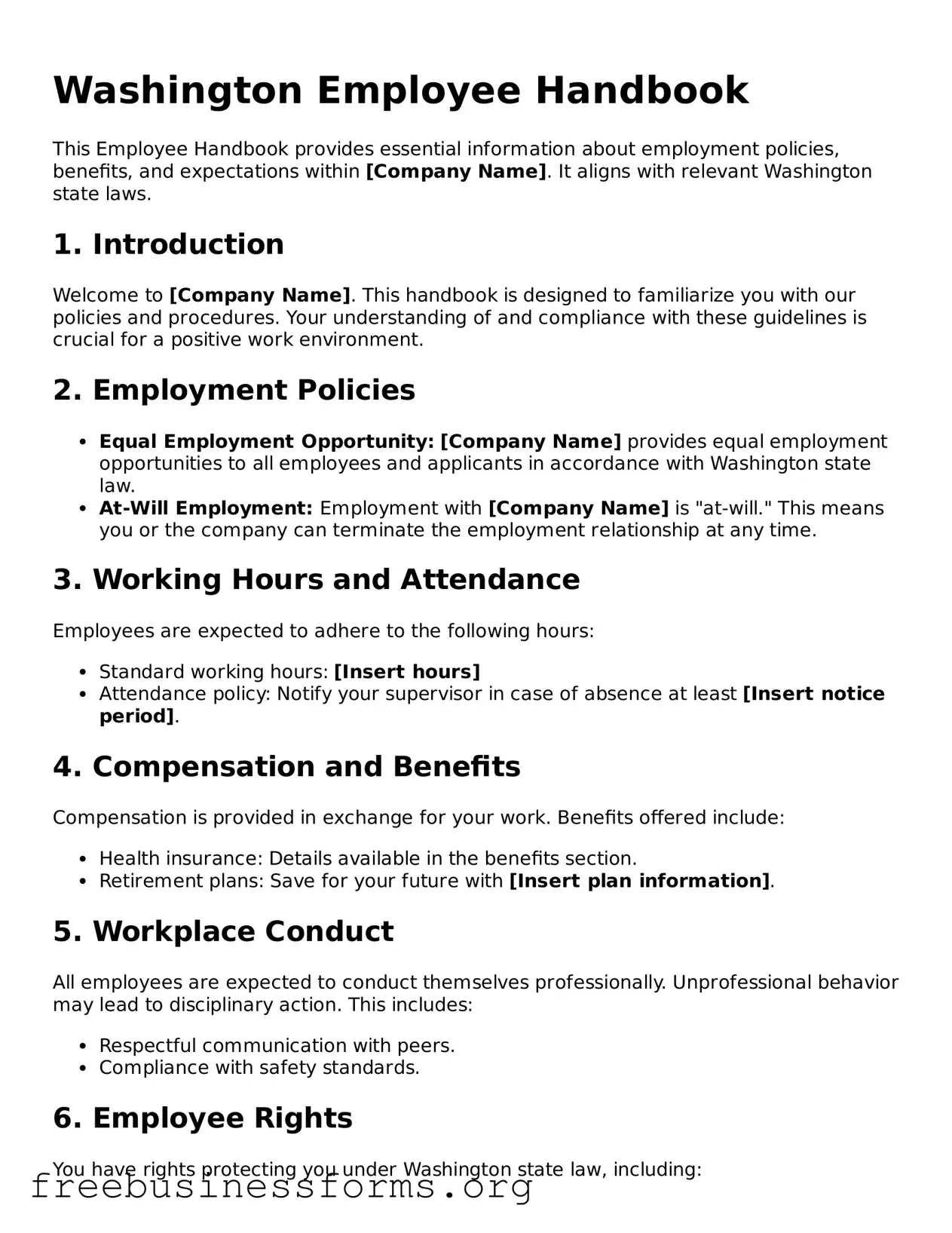Washington Employee Handbook
This Employee Handbook provides essential information about employment policies, benefits, and expectations within [Company Name]. It aligns with relevant Washington state laws.
1. Introduction
Welcome to [Company Name]. This handbook is designed to familiarize you with our policies and procedures. Your understanding of and compliance with these guidelines is crucial for a positive work environment.
2. Employment Policies
- Equal Employment Opportunity: [Company Name] provides equal employment opportunities to all employees and applicants in accordance with Washington state law.
- At-Will Employment: Employment with [Company Name] is "at-will." This means you or the company can terminate the employment relationship at any time.
3. Working Hours and Attendance
Employees are expected to adhere to the following hours:
- Standard working hours: [Insert hours]
- Attendance policy: Notify your supervisor in case of absence at least [Insert notice period].
4. Compensation and Benefits
Compensation is provided in exchange for your work. Benefits offered include:
- Health insurance: Details available in the benefits section.
- Retirement plans: Save for your future with [Insert plan information].
5. Workplace Conduct
All employees are expected to conduct themselves professionally. Unprofessional behavior may lead to disciplinary action. This includes:
- Respectful communication with peers.
- Compliance with safety standards.
6. Employee Rights
You have rights protecting you under Washington state law, including:
- The right to a safe work environment.
- Protection against discrimination.
7. Acknowledgment of Receipt
By signing below, you acknowledge that you have received, read, and understood the Employee Handbook:
Employee Name: _________________________
Date: _________________________
Signature: _________________________
